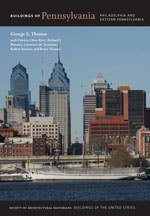
Among the pleasures of the city are the small north–south streets between 11th and 17th streets that became the site for architectural experimentation; none were more exuberant than this refacing of a nineteenth-century carriage house by a veteran of George Howe and Louis Kahn's 1940s practice, and later the famed Black Mountain School in North Carolina. Where most modernists became doctrinaire, Weise found modernism releasing. In this tiny house for himself, the facade was continually transformed and enlarged, first in the Louis Kahn–inspired front arcade and later in the exuberant eruption of the mansard that provided additional living space. Fortunately, the city's historical codes were not so restrictive then to make such verve possible. Weise designed a handful of other houses in the region but, most important, he fought the elevation of I-95 along the waterfront as a threat to its future development.





